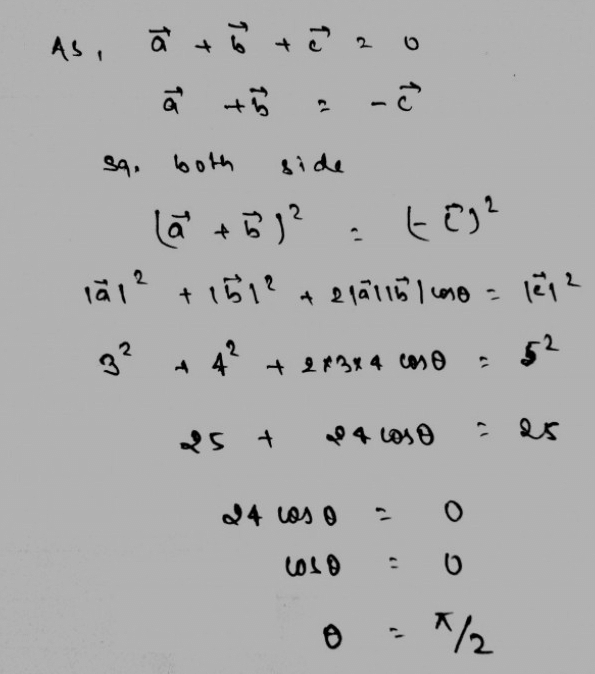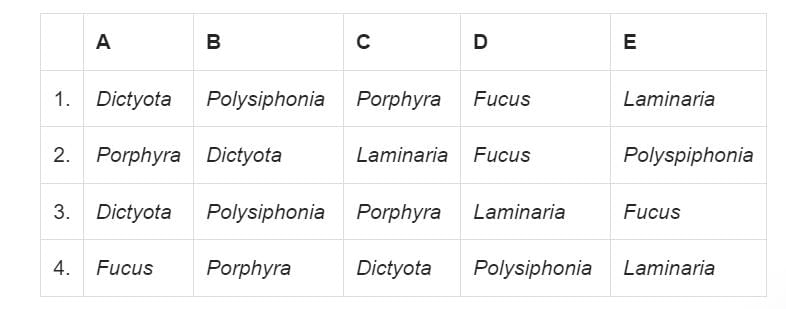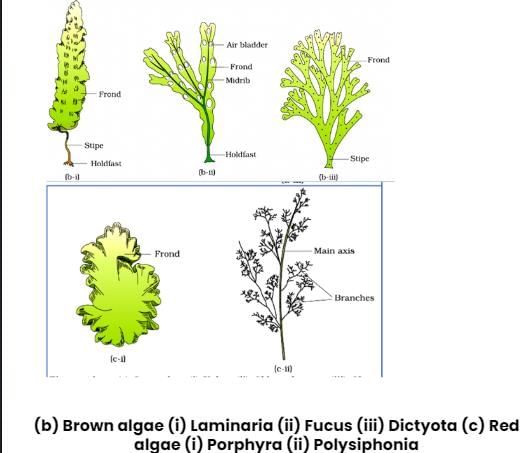All questions of Plant Evolution and Diversity for Grade 9 Exam
Which of the following tissues has dead cells?- a) Parenchyma
- b) Sclerenchyma
- c) Collenchyma
- d) Epithelial tissue
Correct answer is option 'B'. Can you explain this answer?
Which of the following tissues has dead cells?
a)
Parenchyma
b)
Sclerenchyma
c)
Collenchyma
d)
Epithelial tissue

|
Nandita Saha answered |
Sclerenchyma → cells are the permanent tissues present in the plants. They provide hardness and stiffness to the plant and are composed of dead cells.
Liverworts are closely related to- a)Lichen
- b)Mosses
- c)Algae
- d)Fungi
Correct answer is option 'B'. Can you explain this answer?
Liverworts are closely related to
a)
Lichen
b)
Mosses
c)
Algae
d)
Fungi

|
Prisha Singh answered |
The bryophytes are divided into liverworts and mosses. So they closely related to each other.
Cyanobacteria are classified under- a)Protista
- b)Plantae
- c)Monera
- d)Algae
Correct answer is option 'C'. Can you explain this answer?
Cyanobacteria are classified under
a)
Protista
b)
Plantae
c)
Monera
d)
Algae
|
|
Bts My Life answered |
The sole member of kingdom monera is bacteria. Cyanobacteria have chlorophyll a similar to green plants and are photosynthetic autotrophs. The cyanobacteria are unicellular ,colonial,or filamentous fresh-water marine or terrestrial algae.
Meristematic tissues are found in- a) only stems of the plants
- b)both roots and stems
- c)in all growing tips of the plant body
- d)only roots of the plants
Correct answer is option 'C'. Can you explain this answer?
Meristematic tissues are found in
a)
only stems of the plants
b)
both roots and stems
c)
in all growing tips of the plant body
d)
only roots of the plants

|
Debanshi Sarkar answered |
A meristem is the tissue in most plants containing undifferentiated cells (meristematic cells), found in zones of the plant where growth can take place. Meristematic cells give rise to various organs of a plant and are responsible for growth
Various functions like photosynthesis, storage, excretion performed by _________.- a) Sclerenchyma
- b) parenchyma
- c) Collenchyma
- d) Aerenchyma
Correct answer is option 'B'. Can you explain this answer?
Various functions like photosynthesis, storage, excretion performed by _________.
a)
Sclerenchyma
b)
parenchyma
c)
Collenchyma
d)
Aerenchyma

|
Dhruba Saini answered |
Parenchyma forms the bulk of plant ground tissue, where they may be specialised to function in photosynthesis, storage, or transport.
Cavity or lumen is narrow in- a) Sclerenchyma
- b) Parenchyma
- c) Collenchyma
- d) Tracheids
Correct answer is option 'A'. Can you explain this answer?
Cavity or lumen is narrow in
a)
Sclerenchyma
b)
Parenchyma
c)
Collenchyma
d)
Tracheids

|
Dipika Gupta answered |
Lumen are cavities present inside the cell,cells of sclerenchyma tissue have narrow lumen because sclerenchyma are strongly lignified which lead to compressing the cell and thus only narrow cavity is left
Choose the odd one out among the following: Dryopteris, Pteris, Adiantum, Selaginella.- a)Pteris
- b)Adiantum
- c)Selaginella
- d)Dryopteris
Correct answer is option 'C'. Can you explain this answer?
Choose the odd one out among the following: Dryopteris, Pteris, Adiantum, Selaginella.
a)
Pteris
b)
Adiantum
c)
Selaginella
d)
Dryopteris
|
|
Raghav Bansal answered |
Selaginella belong to Pteridophyta of class Lycopsida and other plants belong to class Pteropsida.
In which pteridophytes, hetersporous is produced?- a)Adiantum
- b)Equisetum
- c)Psilotum
- d)Salvinia
Correct answer is option 'D'. Can you explain this answer?
In which pteridophytes, hetersporous is produced?
a)
Adiantum
b)
Equisetum
c)
Psilotum
d)
Salvinia

|
Shivani Rane answered |
Genera like Selaginellaand Salviniawhich produce two kinds of spores, macro (large) and micro (small) spores are known as heterosporous.
Pteridophytes differ from mosses/ bryophytes in possessing- a) independent gametophyte
- b)archegonia
- c)well developed vascular system
- d)flagellate spermatozoids
Correct answer is option 'C'. Can you explain this answer?
Pteridophytes differ from mosses/ bryophytes in possessing
a)
independent gametophyte
b)
archegonia
c)
well developed vascular system
d)
flagellate spermatozoids
|
|
Tanvi Dear answered |
Pteridophyte when compared to mosses / bryophytes have better way for zoidogamy . As bryophytes are known as amphibians of plant kingdom .
Pteridophyte have primitive type of vascular bundles with only tracheids which are not well designed .
Pteridophyte have primitive type of vascular bundles with only tracheids which are not well designed .
A vascular cryptogam is:
- a)Cedrus
- b)Ginkgo
- c)Equisetum
- d)Marchantia
Correct answer is option 'C'. Can you explain this answer?
A vascular cryptogam is:
a)
Cedrus
b)
Ginkgo
c)
Equisetum
d)
Marchantia

|
Sarthak Rajendra Bande answered |
Equisetum is a member of Pteridophytes and Pteridophytes are vascular as well as Cryptogam.
A plant belonging to which of the following groups would show least adaptation to marine water?- a)Pteridophytes
- b)Gymnosperms
- c)Angiosperms
- d)Bryophytes
Correct answer is option 'C'. Can you explain this answer?
A plant belonging to which of the following groups would show least adaptation to marine water?
a)
Pteridophytes
b)
Gymnosperms
c)
Angiosperms
d)
Bryophytes

|
K.L Institute answered |
The correct option is C.
A plant belonging to the angiosperms group would show least adaptation to marine water. Angiosperms are vascular plants that have stems, roots, and leaves.
A plant belonging to the angiosperms group would show least adaptation to marine water. Angiosperms are vascular plants that have stems, roots, and leaves.
Which tissue does lack blood supply and heals slowly?- a) nervous
- b) muscle
- c) cartilage
- d) bone
Correct answer is option 'C'. Can you explain this answer?
Which tissue does lack blood supply and heals slowly?
a)
nervous
b)
muscle
c)
cartilage
d)
bone

|
Debanshi Sarkar answered |
Cartilage heals slowly because it has no blood supply
Presence of vessel in the wood is- a)A primitive character
- b)An advanced character
- c)A vestigeal character
- d)None of the above
Correct answer is option 'B'. Can you explain this answer?
Presence of vessel in the wood is
a)
A primitive character
b)
An advanced character
c)
A vestigeal character
d)
None of the above

|
Nandita Saha answered |
Vessels are usually present in angiosperms while in other lower plants they are not present.
Nucleated part of nerve cell is called- a) axon
- b) dendrites
- c) cyton
- d) None of the above
Correct answer is option 'C'. Can you explain this answer?
Nucleated part of nerve cell is called
a)
axon
b)
dendrites
c)
cyton
d)
None of the above

|
Surbhi Basu answered |
Axon is the long, thin hair like part arising from the cell body of the neuron.
Dendrites are short, branched parts arising from cell body or cyton. Dendrites are many in number.
Cyton is a part of neuron containing the nucleus. It is also called cell body. Therefore, option C is correct.
Dendrites are short, branched parts arising from cell body or cyton. Dendrites are many in number.
Cyton is a part of neuron containing the nucleus. It is also called cell body. Therefore, option C is correct.
Cycas is a gymnosperm as it has- a)Vessels
- b)Living fossil status
- c)Naked seeds
- d)Sieve tubes
Correct answer is option 'C'. Can you explain this answer?
Cycas is a gymnosperm as it has
a)
Vessels
b)
Living fossil status
c)
Naked seeds
d)
Sieve tubes

|
Nayanika Reddy answered |
All gymnosperms have naked seeds. Since, Cycas has naked seeds, it belongs to gymnosperms.
Asexual reproduction in liverworts a specialised structures are called as- a)Gemmae cups
- b)Spores
- c)Fragmentation
- d)Budding
Correct answer is option 'A'. Can you explain this answer?
Asexual reproduction in liverworts a specialised structures are called as
a)
Gemmae cups
b)
Spores
c)
Fragmentation
d)
Budding

|
Ruchi Chopra answered |
The formation of specialised structures called gemmae (sing. gemma). Gemmae are green, multicellular, asexual buds, which develop in small receptacles called gemma cups located on the thalli. The gemmae become detached from the parent body and germinate to form new individuals.
A tissue is a group of cells which are- a)similar in origin, but dissimilar in form and function.
- b)dissimilar in origin, form and function.
- c)dissimilar in origin, but similar in form and function.
- d)similar in origin, form and function.
Correct answer is option 'D'. Can you explain this answer?
A tissue is a group of cells which are
a)
similar in origin, but dissimilar in form and function.
b)
dissimilar in origin, form and function.
c)
dissimilar in origin, but similar in form and function.
d)
similar in origin, form and function.

|
Surbhi Basu answered |
Tissue is a group of cells which act together to perform a specific task. If we talk about a single tissue then, all the cells constituting it performs similar function.
The most stable measure of central tendency is- a)mean
- b)median
- c)mode
- d)none of these
Correct answer is option 'A'. Can you explain this answer?
The most stable measure of central tendency is
a)
mean
b)
median
c)
mode
d)
none of these
|
|
Naina Bansal answered |
Range is not a measure of central tendency at all. It is an absolute measure of Dispersion that is explained by the difference between the maximum and the minimum values in a series. Now, a comparison between the stability amongst Mean, Median and Mode depends on the nature of the distribution that you're working with. Let's say your data has a lot of outliers, in such a case mean will not serve the purpose well as a measure of CT, Median would be more appropriate. Remember that Mean is affected by extreme values while Median is not. Mode is more appropriate when you're more concerned about the frequency of occurences. For example if you wanted to know what size of shoes should a shoe seller keep more in stock compared to the other sizes.
The dead element present in the phloem is- a) companion cells
- b) phloem fibres
- c) phloem parenchyma
- d) sieve tube
Correct answer is option 'B'. Can you explain this answer?
The dead element present in the phloem is
a)
companion cells
b)
phloem fibres
c)
phloem parenchyma
d)
sieve tube

|
Athul Saini answered |
Phloem fibres are thick walled, elongated spindle shaped dead cells which possess narrow lumen. They provides mechanical support to the tissue. Phloem parenchyma are thin walled-living cells of parenchyma. They have two functions, storage and lateral food conduction
Laminaria and Fucus belong to- a)Green algae
- b)Brown algae
- c)Golden brown algae
- d)Red algae
Correct answer is option 'B'. Can you explain this answer?
Laminaria and Fucus belong to
a)
Green algae
b)
Brown algae
c)
Golden brown algae
d)
Red algae

|
Arya Khanna answered |
The common forms of Brown algae or Phaeophyceae are Ectocarpus, Dictyota, Laminaria, Sargassumand Fucus.
The equilibrium constant in a reversible chemical reaction at a given temperature- a)depends on the initial concentration of the reactants
- b)depends on the concentration of one of the products at equilibrium
- c)does not depend on the initial concentrations of reactants
- d)is not characteristic of the reaction
Correct answer is option 'C'. Can you explain this answer?
The equilibrium constant in a reversible chemical reaction at a given temperature
a)
depends on the initial concentration of the reactants
b)
depends on the concentration of one of the products at equilibrium
c)
does not depend on the initial concentrations of reactants
d)
is not characteristic of the reaction
|
|
Swati Khanna answered |
The correct option is C.
The equilibrium constant in a reversible reaction at a given temperature. Solution : Equilibrium constant is independent of original concentration of reactant.
The equilibrium constant in a reversible reaction at a given temperature. Solution : Equilibrium constant is independent of original concentration of reactant.
The chief function of vessels in the plant body is- a) to translocate food material
- b) to conduct water and mineral salts
- c) to support living cells
- d) all above
Correct answer is option 'B'. Can you explain this answer?
The chief function of vessels in the plant body is
a)
to translocate food material
b)
to conduct water and mineral salts
c)
to support living cells
d)
all above

|
Dipika Gupta answered |
Xylem, plant vascular tissue that conveys water and dissolved minerals from the roots to the rest of the plant and also provides physical support.
The phenomenon in which seeds germinate and seedlings grow while still attached to their mother plant before dropping down to establish themselves or be transported elsewhere, is most commonly found in which among the following plants?- a)Allium cepa
- b)Rhizophora
- c)Solanum tuberosum
- d)Solanum melongena
Correct answer is option 'B'. Can you explain this answer?
The phenomenon in which seeds germinate and seedlings grow while still attached to their mother plant before dropping down to establish themselves or be transported elsewhere, is most commonly found in which among the following plants?
a)
Allium cepa
b)
Rhizophora
c)
Solanum tuberosum
d)
Solanum melongena

|
Samarth Gupta answered |
Allium cepa is onion. Solanum tuberosum is potato, Solanum melongena is Brinjal. The phenomenon given in this question is shown by Mangrove Plants and is known as Vivipary and Rhizophora belongs to that category.
Lignin is the important constituent in the cell wall of- a) phloem
- b) parenchyma
- c) xylem
- d) cambium
Correct answer is option 'C'. Can you explain this answer?
Lignin is the important constituent in the cell wall of
a)
phloem
b)
parenchyma
c)
xylem
d)
cambium

|
Aashna Patel answered |
Lignin is a constituent of the cell walls of almost all dry land plant cell walls.
Which of the statements given above is/are correct?1. Statement 1: Gymnosperms have enclosed ovules.
2. Statement 2: Angiosperms produce seeds that are enclosed in fruits.- a)1 Only
- b)2 Only
- c)Both 1 and 2
- d)Neither 1 nor 2
Correct answer is option 'B'. Can you explain this answer?
Which of the statements given above is/are correct?
1. Statement 1: Gymnosperms have enclosed ovules.
2. Statement 2: Angiosperms produce seeds that are enclosed in fruits.
2. Statement 2: Angiosperms produce seeds that are enclosed in fruits.
a)
1 Only
b)
2 Only
c)
Both 1 and 2
d)
Neither 1 nor 2
|
|
Sanchita Saha answered |
Understanding Gymnosperms and Angiosperms
To determine the correctness of the statements about gymnosperms and angiosperms, let's analyze each statement in detail.
Statement 1: Gymnosperms have enclosed ovules.
- Gymnosperms are a group of plants that produce seeds that are not enclosed in an ovary.
- The term "gymnosperm" literally means "naked seed," indicating that their seeds develop on the surface of scales or leaves, often in cones.
- Therefore, this statement is incorrect.
Statement 2: Angiosperms produce seeds that are enclosed in fruits.
- Angiosperms are flowering plants that produce seeds enclosed within a fruit.
- The ovary of the flower develops into a fruit after fertilization, protecting the seeds and aiding in their dispersal.
- This statement is correct.
Conclusion
Based on the analysis:
- Statement 1 is incorrect.
- Statement 2 is correct.
Thus, the correct answer to the question is option B: 2 Only.
This distinction between gymnosperms and angiosperms is fundamental in plant biology, highlighting their reproductive adaptations and evolutionary significance.
To determine the correctness of the statements about gymnosperms and angiosperms, let's analyze each statement in detail.
Statement 1: Gymnosperms have enclosed ovules.
- Gymnosperms are a group of plants that produce seeds that are not enclosed in an ovary.
- The term "gymnosperm" literally means "naked seed," indicating that their seeds develop on the surface of scales or leaves, often in cones.
- Therefore, this statement is incorrect.
Statement 2: Angiosperms produce seeds that are enclosed in fruits.
- Angiosperms are flowering plants that produce seeds enclosed within a fruit.
- The ovary of the flower develops into a fruit after fertilization, protecting the seeds and aiding in their dispersal.
- This statement is correct.
Conclusion
Based on the analysis:
- Statement 1 is incorrect.
- Statement 2 is correct.
Thus, the correct answer to the question is option B: 2 Only.
This distinction between gymnosperms and angiosperms is fundamental in plant biology, highlighting their reproductive adaptations and evolutionary significance.
Which of the marine algae is not used as food?- a)Laminaria
- b)Sargassum
- c)Porphyra
- d)Volvox
Correct answer is option 'D'. Can you explain this answer?
Which of the marine algae is not used as food?
a)
Laminaria
b)
Sargassum
c)
Porphyra
d)
Volvox

|
Ciel Knowledge answered |
Many species of Porphyra, Laminaria and Sargassum are among the 70 species of marine algae used as food.
Which of the following is an epidermal cell- a) Guard cells
- b) Root hairs
- c) Trichome
- d) All of these
Correct answer is option 'D'. Can you explain this answer?
Which of the following is an epidermal cell
a)
Guard cells
b)
Root hairs
c)
Trichome
d)
All of these
|
|
Simran Menon answered |
Epidermal cells from the outer covering or surface which is mainly involved in protection and secretion. Guard cells, root hairs, and trichomes are all modifications of the epidermal cells.
(i) Root hair
Structure:
Unicellular hairs are the extensions of an epidermal cell of roots in the root hair zone.
Function:
It increases the surface area for absorption of water and minerals.
(ii) Epidermal appendages
Structure:
These are called trichomes and are epidermal cell modifications. There may be unicellular or multicellular.
Functions:
Some perform for stinging produces and some glandular secretions.
(iii) Guard cell
Structure:
These are bean-shaped cells present on the epidermis of the leaf.
Functions:
These help in gaseous exchange and transpiration.
(i) Root hair
Structure:
Unicellular hairs are the extensions of an epidermal cell of roots in the root hair zone.
Function:
It increases the surface area for absorption of water and minerals.
(ii) Epidermal appendages
Structure:
These are called trichomes and are epidermal cell modifications. There may be unicellular or multicellular.
Functions:
Some perform for stinging produces and some glandular secretions.
(iii) Guard cell
Structure:
These are bean-shaped cells present on the epidermis of the leaf.
Functions:
These help in gaseous exchange and transpiration.
Which of the statements given above is/are correct?- a) Fungal association in the form of mycorrhiza is characteristic of Cycas.
- b) Coralloid roots in Pinus are associated with N2-fixing cyanobacteria.
- c) Both 1 and 2
- d) Neither 1 and 2
Correct answer is option 'D'. Can you explain this answer?
Which of the statements given above is/are correct?
a)
Fungal association in the form of mycorrhiza is characteristic of Cycas.
b)
Coralloid roots in Pinus are associated with N2-fixing cyanobacteria.
c)
Both 1 and 2
d)
Neither 1 and 2

|
Lead Academy answered |
1. Fungal association in the form of mycorrhiza is not characteristic of Cycas but of Pinus.
2. Coralloid roots in Cycas are associated with N2-fixing cyanobacteria, not in Pinus.
Line in NCERT: "Roots in some genera have fungal association in the form of mycorrhiza (Pinus), while in some others (Cycas) small specialised roots called coralloid roots are associated with N2- fixing cyanobacteria."
Consider the following statements regarding green algae:
I. Pigments are located in definite plastids
II. Most have pyrenoids in chloroplasts
III. Cell wall has an inner layer of pectose and outer layer of cellulose- a)Only I and II are correct
- b)Only I and III are correct
- c)Only II and III are correct
- d)I, II and III are correct
Correct answer is option 'A'. Can you explain this answer?
I. Pigments are located in definite plastids
II. Most have pyrenoids in chloroplasts
III. Cell wall has an inner layer of pectose and outer layer of cellulose
a)
Only I and II are correct
b)
Only I and III are correct
c)
Only II and III are correct
d)
I, II and III are correct

|
Ambition Institute answered |
In green algae, pigments such as chlorophylls are indeed located in definite plastids (I), and most green algae have pyrenoids in their chloroplasts (II) for storing starch. However, the typical composition of the cell wall in green algae consists of an inner layer of cellulose and an outer layer of pectose or other polysaccharides, not the reverse as stated in III. Therefore, only statements I and II are correct.
Girth of stem increases due to- a) apical meristem
- b) lateral meristem
- c) intercalary meristem
- d) vertical meristem
Correct answer is option 'B'. Can you explain this answer?
Girth of stem increases due to
a)
apical meristem
b)
lateral meristem
c)
intercalary meristem
d)
vertical meristem
|
|
Moumita Choudhury answered |
Understanding Lateral Meristem
The girth of a stem increases due to the activity of lateral meristem. This process is known as secondary growth, which is crucial for the development of woody plants.
What is Lateral Meristem?
- Lateral meristem consists of two main types:
- Vascular cambium: Produces secondary xylem (wood) and secondary phloem (bark).
- Cork cambium: Forms the protective outer covering of stems and roots.
Role in Stem Girth
- Secondary Growth:
- Lateral meristems contribute to the thickness of the stem by adding layers of cells.
- As the vascular cambium divides, it adds new xylem cells toward the inside and phloem cells toward the outside.
- Formation of Wood:
- The continuous production of xylem cells leads to an increase in stem girth, which provides structural support and facilitates nutrient and water transport.
Comparison with Other Meristems
- Apical Meristem:
- Located at the tips of roots and shoots, responsible for primary growth (lengthening).
- Intercalary Meristem:
- Found at the base of leaves or internodes, aiding in elongation but not in girth.
- Vertical Meristem:
- This term is not commonly used in botanical terminology and may refer to apical meristems.
Conclusion
In summary, the increase in the girth of a stem is primarily due to the activity of lateral meristems, which facilitate secondary growth, making them essential for the overall growth and stability of woody plants.
The girth of a stem increases due to the activity of lateral meristem. This process is known as secondary growth, which is crucial for the development of woody plants.
What is Lateral Meristem?
- Lateral meristem consists of two main types:
- Vascular cambium: Produces secondary xylem (wood) and secondary phloem (bark).
- Cork cambium: Forms the protective outer covering of stems and roots.
Role in Stem Girth
- Secondary Growth:
- Lateral meristems contribute to the thickness of the stem by adding layers of cells.
- As the vascular cambium divides, it adds new xylem cells toward the inside and phloem cells toward the outside.
- Formation of Wood:
- The continuous production of xylem cells leads to an increase in stem girth, which provides structural support and facilitates nutrient and water transport.
Comparison with Other Meristems
- Apical Meristem:
- Located at the tips of roots and shoots, responsible for primary growth (lengthening).
- Intercalary Meristem:
- Found at the base of leaves or internodes, aiding in elongation but not in girth.
- Vertical Meristem:
- This term is not commonly used in botanical terminology and may refer to apical meristems.
Conclusion
In summary, the increase in the girth of a stem is primarily due to the activity of lateral meristems, which facilitate secondary growth, making them essential for the overall growth and stability of woody plants.
Turmeric belongs to from which one of the following family of plants?- a)Radish
- b)Ginger
- c)Onion
- d)Clove
Correct answer is option 'B'. Can you explain this answer?
Turmeric belongs to from which one of the following family of plants?
a)
Radish
b)
Ginger
c)
Onion
d)
Clove

|
Anshul Verma answered |
Turmeric is a perennial species of herb belonging to the Zingiberaceae family, same as ginger. It is stark yellow to orange in color. Turmeric is also a rhizome that is used extensively for its anti-inflammatory properties.
If a,b,c are any three vectors, the statement is true- a)ax(bxc)=(axb)xc
- b)axb=bxa
- c)a.(bxc)=a.b+a.c
- d)a.(b-c)=a.b-a.c
Correct answer is option 'D'. Can you explain this answer?
If a,b,c are any three vectors, the statement is true
a)
ax(bxc)=(axb)xc
b)
axb=bxa
c)
a.(bxc)=a.b+a.c
d)
a.(b-c)=a.b-a.c
|
|
Partho Sen answered |
D is the correct option.a.(b-c)=a.b-a.c is correct if a,b,c are any three vectors.
Isopropyl chloride undergoes hydrolysis by- a)SN1 mechanism
- b)SN2 mechanism
- c)SN1 and SN2 mechanism
- d)Neither SN1 nor SN2 mechanism
Correct answer is option 'C'. Can you explain this answer?
Isopropyl chloride undergoes hydrolysis by
a)
SN1 mechanism
b)
SN2 mechanism
c)
SN1 and SN2 mechanism
d)
Neither SN1 nor SN2 mechanism
|
|
Sreemoyee Gupta answered |
Secondary, primary allylic and primary benzylic halides may react predominantly either by SN1 or SN2 mechanism or by both the mechanisms without much preference, depending upon the nature of the nuclephile and the solvent.
Which among the following is the correct meaning of Phyllotaxy?- a)Classification of plants as per the leaves structure
- b)The manner of arrangement of leaves in stem or branch
- c)The manner the leaves fall from the branches
- d)The anatomy of leaves in angiosperms
Correct answer is option 'B'. Can you explain this answer?
Which among the following is the correct meaning of Phyllotaxy?
a)
Classification of plants as per the leaves structure
b)
The manner of arrangement of leaves in stem or branch
c)
The manner the leaves fall from the branches
d)
The anatomy of leaves in angiosperms

|
Aashna Patel answered |
The manner of arrangement of leaves in stem or branch is called Phyllotaxy
In Pinus,I. The stem is branchedII. Roots have fungal association in the form of mycorrhizaIII. The male and female strobili are borne on different treesOf the above statements:- a)Only I is correct
- b)Only II is correct
- c)Only I and II are correct
- d)I, II and III are correct
Correct answer is option 'C'. Can you explain this answer?
In Pinus,
I. The stem is branched
II. Roots have fungal association in the form of mycorrhiza
III. The male and female strobili are borne on different trees
Of the above statements:
a)
Only I is correct
b)
Only II is correct
c)
Only I and II are correct
d)
I, II and III are correct
|
|
Sahil Basu answered |
Overview of Pinus Characteristics
Pinus, commonly known as pine trees, exhibits several distinctive features. Let's analyze the statements regarding their characteristics:
Statement I: The stem is branched
- True: Pine trees typically have a branched stem structure. The branching allows for effective sunlight capture and contributes to their overall growth.
Statement II: Roots have fungal association in the form of mycorrhiza
- True: Pine roots form symbiotic relationships with fungi known as mycorrhiza. This association enhances nutrient uptake, especially phosphorus, benefiting both the tree and the fungus.
Statement III: The male and female strobili are borne on different trees
- False: In Pinus species, male and female strobili (cones) are usually found on the same tree, making them monoecious. This means that both reproductive structures can occur on a single individual.
Conclusion
Based on the analysis of the statements:
- Statement I is correct.
- Statement II is correct.
- Statement III is incorrect.
Thus, the correct answer is option 'C' - only I and II are correct.
This understanding of Pinus characteristics is vital for recognizing their ecological roles and adaptations.
Pinus, commonly known as pine trees, exhibits several distinctive features. Let's analyze the statements regarding their characteristics:
Statement I: The stem is branched
- True: Pine trees typically have a branched stem structure. The branching allows for effective sunlight capture and contributes to their overall growth.
Statement II: Roots have fungal association in the form of mycorrhiza
- True: Pine roots form symbiotic relationships with fungi known as mycorrhiza. This association enhances nutrient uptake, especially phosphorus, benefiting both the tree and the fungus.
Statement III: The male and female strobili are borne on different trees
- False: In Pinus species, male and female strobili (cones) are usually found on the same tree, making them monoecious. This means that both reproductive structures can occur on a single individual.
Conclusion
Based on the analysis of the statements:
- Statement I is correct.
- Statement II is correct.
- Statement III is incorrect.
Thus, the correct answer is option 'C' - only I and II are correct.
This understanding of Pinus characteristics is vital for recognizing their ecological roles and adaptations.
Which of the following plant growth hormone was recognized by Japanese scientists? - a)Auxin
- b)Gibberellins
- c)Abscisic acid
- d)Cytokinin
Correct answer is option 'B'. Can you explain this answer?
Which of the following plant growth hormone was recognized by Japanese scientists?
a)
Auxin
b)
Gibberellins
c)
Abscisic acid
d)
Cytokinin
|
|
Gauri Bajaj answered |
Introduction to Gibberellins
Gibberellins are a class of plant growth hormones that play a crucial role in regulating various processes in plant development. Their discovery was significantly attributed to Japanese scientists in the early 20th century.
Discovery by Japanese Scientists
- In the 1920s, Japanese researchers, particularly Eiichi Kurosawa, discovered gibberellins while studying a rice disease called "bakanae," which caused excessive elongation of rice plants.
- They isolated the causal agent from the fungus *Gibberella fujikuroi*, leading to the identification of gibberellins as plant hormones.
Functions of Gibberellins
- Stem Elongation: Gibberellins promote cell elongation, making plants grow taller.
- Seed Germination: They stimulate the breakdown of starches and other reserves in seeds, aiding in germination.
- Flowering and Fruit Development: Gibberellins influence flowering processes and can promote fruit enlargement.
Importance in Agriculture
- Gibberellins are utilized in agriculture to enhance crop yields, improve fruit size, and control flowering times.
- They are also used in the production of seedless fruits and in malting processes for brewing.
Conclusion
The recognition of gibberellins by Japanese scientists has greatly contributed to our understanding of plant growth and development. Their role as a growth regulator has made them essential tools in modern agriculture, showcasing the significance of research in plant biology.
Gibberellins are a class of plant growth hormones that play a crucial role in regulating various processes in plant development. Their discovery was significantly attributed to Japanese scientists in the early 20th century.
Discovery by Japanese Scientists
- In the 1920s, Japanese researchers, particularly Eiichi Kurosawa, discovered gibberellins while studying a rice disease called "bakanae," which caused excessive elongation of rice plants.
- They isolated the causal agent from the fungus *Gibberella fujikuroi*, leading to the identification of gibberellins as plant hormones.
Functions of Gibberellins
- Stem Elongation: Gibberellins promote cell elongation, making plants grow taller.
- Seed Germination: They stimulate the breakdown of starches and other reserves in seeds, aiding in germination.
- Flowering and Fruit Development: Gibberellins influence flowering processes and can promote fruit enlargement.
Importance in Agriculture
- Gibberellins are utilized in agriculture to enhance crop yields, improve fruit size, and control flowering times.
- They are also used in the production of seedless fruits and in malting processes for brewing.
Conclusion
The recognition of gibberellins by Japanese scientists has greatly contributed to our understanding of plant growth and development. Their role as a growth regulator has made them essential tools in modern agriculture, showcasing the significance of research in plant biology.
The Indian Pipe Plant or Monotrapa can be best placed in which among the following groups?- a)Parasite
- b)Saprophyte
- c) Insectivorous
- d)Lithophyte
Correct answer is option 'B'. Can you explain this answer?
The Indian Pipe Plant or Monotrapa can be best placed in which among the following groups?
a)
Parasite
b)
Saprophyte
c)
Insectivorous
d)
Lithophyte

|
Geetika Bajaj answered |
Pipe Plant is a total saprophyte i.e. thrives on dead or decayed organic matter.
The structure of white phosphorus is- a)Square planar
- b)Pyramidal
- c)Tetrahedral
- d)Trigonal planar
Correct answer is option 'C'. Can you explain this answer?
The structure of white phosphorus is
a)
Square planar
b)
Pyramidal
c)
Tetrahedral
d)
Trigonal planar
|
|
Tanuja Kapoor answered |
C is the correct option.The structure of white phosphorus is tetrahedral.
White phosphorus, yellow phosphorus or simply tetraphosphorus (P4) exists as molecules made up of four atoms in a tetrahedral structure. The tetrahedral arrangement results in ring strain and instability. The molecule is described as consisting of six single P–P bonds.
White phosphorus, yellow phosphorus or simply tetraphosphorus (P4) exists as molecules made up of four atoms in a tetrahedral structure. The tetrahedral arrangement results in ring strain and instability. The molecule is described as consisting of six single P–P bonds.
An organic compound A reacts with methyl magnesium iodide to form an addition product which on hydrolysis forms the compound B. Compound B gives blue colour salt in Victor Meyer's test. The compounds A and B are respectively.- a)Acetaldehyde, tertiary butyl alcohol
- b)Acetaldehyde, ethyl alcohol
- c)Acetaldehyde, isopropyl alcohol
- d)Acetone, isopropyl alcohol
Correct answer is option 'C'. Can you explain this answer?
An organic compound A reacts with methyl magnesium iodide to form an addition product which on hydrolysis forms the compound B. Compound B gives blue colour salt in Victor Meyer's test. The compounds A and B are respectively.
a)
Acetaldehyde, tertiary butyl alcohol
b)
Acetaldehyde, ethyl alcohol
c)
Acetaldehyde, isopropyl alcohol
d)
Acetone, isopropyl alcohol
|
|
Priya Khanna answered |
Compound B is a sec. alcohol since it gives blue colour in Victor-Meyer test and sec alcohol are obtained by the action of CH3MgIon an aldehyde other than formaldehyde.
Given below are two statements: one is labelled as Assertion (A) and the other is labelled as Reason (R):
Assertion (A): Heterospory in some pteridophytes paved the way for the evolution of seeds in higher plants.
Reason (R): The megaspores and microspores in heterosporous ferns give rise to female and male gametophytes respectively.
In the light of the above statements, choose the correct answer from the options given below:- a)Both (A) and (R) are True and (R) is the correct explanation of (A).
- b)Both (A) and (R) are True but (R) is not the correct explanation of (A).
- c)(A) is True but (R) is False.
- d)(A) is False but (R) is True.
Correct answer is option 'B'. Can you explain this answer?
Assertion (A): Heterospory in some pteridophytes paved the way for the evolution of seeds in higher plants.
Reason (R): The megaspores and microspores in heterosporous ferns give rise to female and male gametophytes respectively.
In the light of the above statements, choose the correct answer from the options given below:
a)
Both (A) and (R) are True and (R) is the correct explanation of (A).
b)
Both (A) and (R) are True but (R) is not the correct explanation of (A).
c)
(A) is True but (R) is False.
d)
(A) is False but (R) is True.

|
EduRev NEET answered |
Assertion (A) is true because heterospory (the production of two types of spores, microspores and megaspores) is an evolutionary step that led to the development of seeds in higher plants. Reason (R) is also true as it correctly describes the role of megaspores and microspores in heterosporous ferns. However, while (R) is true, it is not the direct explanation of how heterospory led to the evolution of seeds, which involves more complex evolutionary transitions beyond just the production of different spore types.
Topic in NCERT: Heterospory and Gametophyte DevelopmentLine in NCERT: "The megaspores and microspores germinate and give rise to female and male gametophytes, respectively. This event is a precursor to the seed habit considered an important step in evolution."
Select the mismatch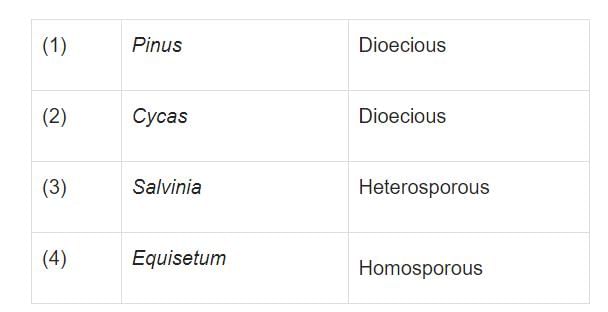
- a)1
- b)3
- c)2
- d)4
Correct answer is option 'A'. Can you explain this answer?
Select the mismatch

a)
1
b)
3
c)
2
d)
4

|
Ciel Knowledge answered |
- Pinus - Dioecious: Pinus species are actually monoecious, meaning that both male and female cones are present on the same tree. Therefore, this statement is a mismatch.
- Cycas - Dioecious: Cycas, a type of cycads, is indeed dioecious, meaning male and female reproductive structures are on separate individuals. This statement is correct.
- Salvinia - Heterosporous: Salvinia, a genus of aquatic ferns, is indeed heterosporous, meaning it produces two types of spores: microspores and megaspores. This statement is correct.
- Equisetum - Homosporous: Equisetum, commonly known as horsetails, is indeed homosporous, producing only one type of spore that develops into a bisexual gametophyte. This statement is correct.
Thus, the mismatch is:
(1) Pinus - Dioecious
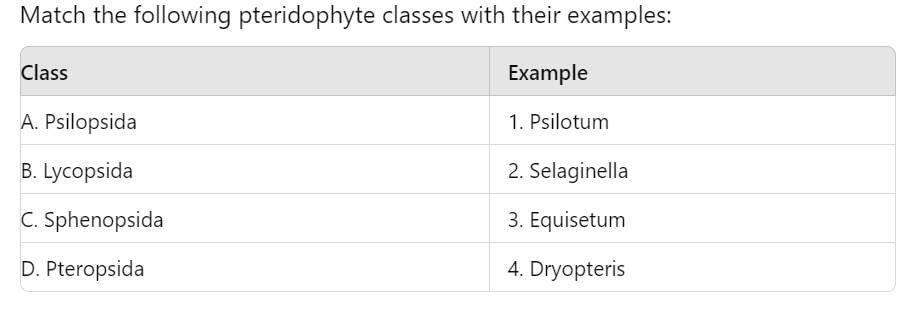
- a)A - 1,B - 2, C - 4, D - 3
- b)A - 2, B - 1, C - 4, D - 3
- c)A - 3, B - 4, C - 1, D - 2
- d) A - 1,B - 2, C - 3, D - 4
Correct answer is option 'D'. Can you explain this answer?

a)
A - 1,B - 2, C - 4, D - 3
b)
A - 2, B - 1, C - 4, D - 3
c)
A - 3, B - 4, C - 1, D - 2
d)
A - 1,B - 2, C - 3, D - 4

|
Lead Academy answered |
The pteridophytes are further classified into four classes: Psilopsida (Psilotum); Lycopsida (Selaginella, Lycopodium), Sphenopsida (Equisetum) and Pteropsida (Dryopteris, Pteris, Adiantum).
Find the true statement:- a) Meristematic cells are not compactly arranged.
- b) Collenchyma is not a simple tissue.
- c) the term histology was coined by Meyer
- d) None of these
Correct answer is option 'C'. Can you explain this answer?
Find the true statement:
a)
Meristematic cells are not compactly arranged.
b)
Collenchyma is not a simple tissue.
c)
the term histology was coined by Meyer
d)
None of these
|
|
Raghav Patel answered |
C is the correct option.
- Collenchyma is a simple tissue.
- The meristematic cells are compactly arranged & do not contain any intercellular space between them.
- The term 'histology', from the Greek 'hίstos' for a 'web', appears in the title of Carl Mayer's (1787 – 1865) 41-page book Ueber Histologie und eine neue Eintheilung der Gewebe des menschlichen Körpers which was published by Adolph Marcus of Bonn in 1819. Hence, the statement is correct.
Chapter doubts & questions for Plant Evolution and Diversity - Biology 2025 is part of Grade 9 exam preparation. The chapters have been prepared according to the Grade 9 exam syllabus. The Chapter doubts & questions, notes, tests & MCQs are made for Grade 9 2025 Exam. Find important definitions, questions, notes, meanings, examples, exercises, MCQs and online tests here.
Chapter doubts & questions of Plant Evolution and Diversity - Biology in English & Hindi are available as part of Grade 9 exam.
Download more important topics, notes, lectures and mock test series for Grade 9 Exam by signing up for free.
Biology
153 videos|283 docs|127 tests
|

Contact Support
Our team is online on weekdays between 10 AM - 7 PM
Typical reply within 3 hours
|
Free Exam Preparation
at your Fingertips!
Access Free Study Material - Test Series, Structured Courses, Free Videos & Study Notes and Prepare for Your Exam With Ease

 Join the 10M+ students on EduRev
Join the 10M+ students on EduRev
|

|
Create your account for free
OR
Forgot Password
OR
Signup on EduRev and stay on top of your study goals
10M+ students crushing their study goals daily

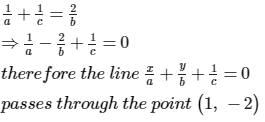 .
.